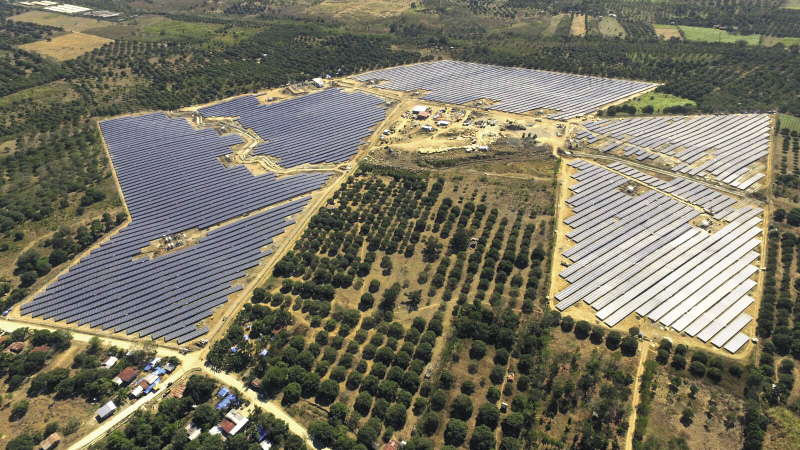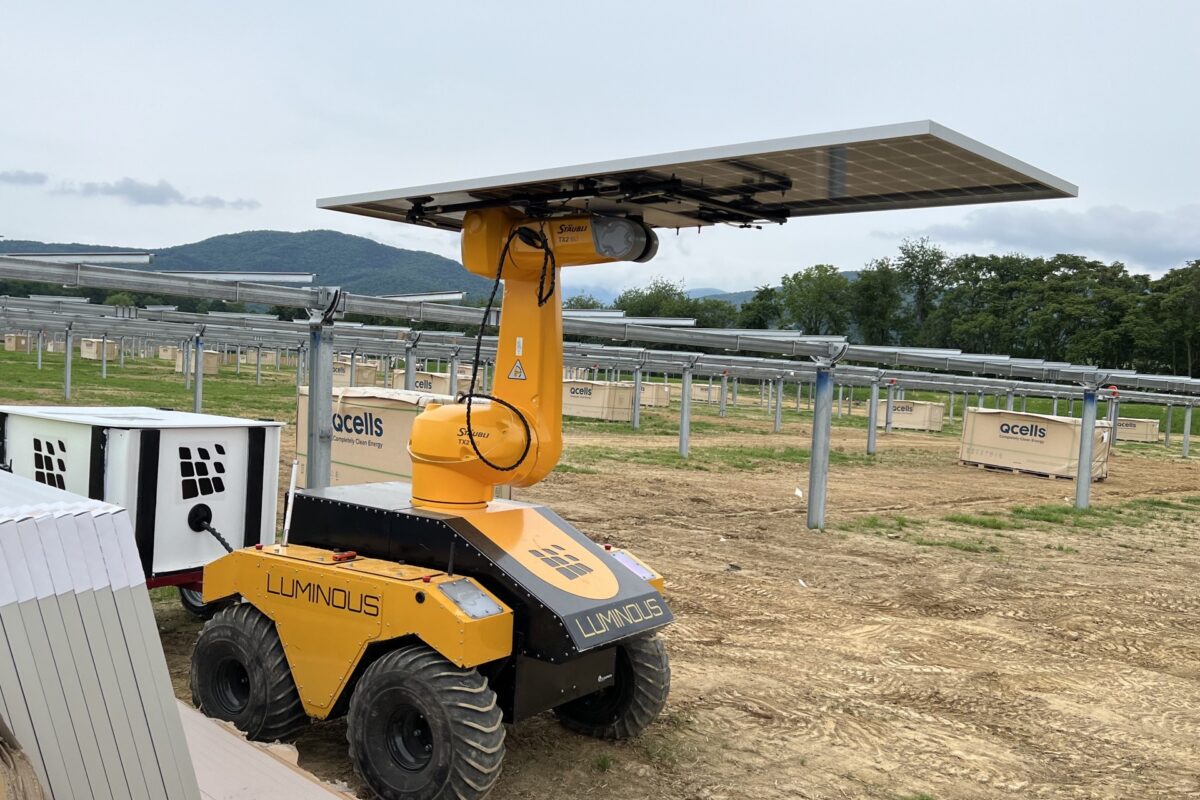Finland, population 5.5 million, is a European nation with about one-third of its territory located above the Arctic Circle. Indonesia, population 268 million, is a huge country of about 17,000 islands splashed across the equator. So that’s 52 times more people than Finland. But Finland’s installed solar energy capacity is bigger than Indonesia’s.
Yet, at the same time, we need to increase global renewable energy capacity to 85% of electricity by 2050 to urgently tackle climate change. So what is going on in Indonesia? You’d be right to ask.
Indonesia is a member of the Association of Southeast Asian Nations (ASEAN), a block of 10 countries with a combined 650 million people. ASEAN’s share of global renewable energy has been decreasing, after peaking in 2012 as a percentage relative to other regions around the world. And yet, all of these ASEAN countries have signed up to the Paris Climate Accord. Broadening the question, what is going on in Southeast Asia?
Regional snapshot
The ASEAN region is one of the few that features very high growth in energy demand. What that means is that the 650 million people in ASEAN don’t have access to enough electricity. At the same time the region is distinguished by the fact that despite all of the evidence, it is still threatening to set the world on fire through its coal and gas expansion plans.
Here are some examples from around the region. Indonesia is extremely suitable for solar and wind, but across its 17,000 islands it continues to import diesel in polluting vessels, rather than actually seeking energy independence, security and cost savings via renewable energy.
Thailand once was undergoing a very positive pivot to renewable energy that completely stopped, and nobody can explain why. Instead, Thailand is now building gas generation that it doesn’t need, instead of taking advantage of the solar and wind, with which it is so richly endowed.
Malaysia very recently distinguished itself globally as the only country in which the number of solar panel installations had actually declined in recent years. And Singapore, the most developed country in the region, which should be leading by example, remains disappointingly slow in backing renewables in the region and EVs domestically.
Poor progress
The question is, what is standing in the way of ASEAN’s adoption of renewables? The answer is that there are three somewhat invisible barriers. The first is that once a solar or wind plant is built, there is no need to buy fuel to keep it running. But when a coal or natural gas power plant is built, for decades afterwards coal must be mined, shipped and cleaned. Gas is worse, as it often comes from very far away, meaning it must be liquified, reprocessed, and all the while methane is leaked. It also means that billions will be paid each year to buy that coal and gas for decades, resulting in political influence that vested fossil fuel interests can have and the power that goes with all of that cash. The sun and wind can’t compete, because they are competing on merit alone.
A second factor is that governments generate a lot of revenue taxing petrol. EVs and electric buses therefore have an uphill battle to fight; even if they are cost competitive and much cleaner, they are not welcome unless there is some way for governments to make up for that lost revenue. And these governments are not being creative about getting around the problem, by taking actions such as raising pollution levies.
The third reason is that money and access are powerful barriers to change. The oil, gas and coal industries have influential voices and tentacles everywhere in ASEAN. The renewable energy industry tends to be small, distributed and poor by contrast.
Positive signs
There is good news in that the resistance to renewables in ASEAN simply cannot last. The clean energy revolution is going to steamroll fossil fuels here as it does worldwide. Particularly as Southeast Asia’s demand for power generation is expected to double by 2025, while global energy demand grows 50% by 2025. To meet this demand, the region cannot continue to so thoroughly ignore renewables.
There are three notable exceptions to the lack of renewable energy progress in this part of the world – the first being the Philippines. The country has gone through the legislative effort of introducing Renewable Portfolio Standards that, while still in their infancy, are going to make a very big difference in the rollout of renewable energy and the death of coal in that country, as they are increasingly enforced over time.
Myanmar finished 2019 with just 88 MW of solar capacity, and then closed a 1 GW solar tender this year. That is an 11-fold expansion in just one year. Vietnam executed a solar miracle, demonstrating that renewables can come slowly at the beginning and then all of a sudden. The country had just 134 MW of solar capacity in 2018, but then it added 5.5 GW – 41 times that amount – last year alone. Myanmar and Vietnam show that utility-scale solar is more than competitive with fossil fuels in ASEAN without any subsidies.
At the same time, while coal-fired power is losing ground all around the world, many government officials in ASEAN argue that providing energy from coal is the least-cost source. But it couldn’t be further from the truth. Coal is already more expensive than renewables in every ASEAN country and it benefits from broad, deep, structural subsidies. Renewables can also be installed much faster, as Vietnam has just shown. And this is not including external costs of fossil fuels, health and environmental.
External and internal pressure is mounting for ASEAN countries to join the renewable revolutions, as Myanmar just did.
 Author: Assaad W. Razzouk
Author: Assaad W. Razzouk
Assaad W. Razzouk is the chairman and CEO of Sindicatum Renewable Energy, a clean energy company headquartered in Singapore. It finances, builds and operates renewable energy projects in India, Thailand, Indonesia and the Philippines. Razzouk is also the CEO of the Reneum Institute, a Singapore startup that is trying to digitize and democratize renewable energy. This article is a transcript of Episode 40 of his regular climate change and renewable energy podcast, The Angry Clean Energy Guy.
The views and opinions expressed in this article are the author’s own, and do not necessarily reflect those held by pv magazine.
This content is protected by copyright and may not be reused. If you want to cooperate with us and would like to reuse some of our content, please contact: editors@pv-magazine.com.








Agree that we’ll soon at a tipping point and no one can stop the rise of renewables — wind isn’t great here in SEA except for say Vietnam and certain areas far from load centres e.g. northern Thailand, but solar brings really bright hopes. Think it’s a stretch to say that coal is already more expensive than renewables on a full cycle basis, but that should happen toward the middle or later part of this decade. Beyond which along with financing difficulties it’s going to make new coal plants impossible to build. Of course Indonesia will want to extend the life of their coal industry as long as possible, so we will see how the government comes up against mounting international pressure, which will be huge considering how big and important the Indonesia economy is.
Some say gas will be next to hit the chopping board after coal, but I think governments are just going to ride the narrative of needing a lot of gas to complement intermittent renewables. And until battery storage becomes cheaper and readily available with longer-life batteries, it’s hard to argue why. I think people tend to underestimate the pace of growth though, and new technologies like CCUS which will help justify more gas additions. This is really a race of technology, but the deck is definitely in favour of solar in ASEAN for now.